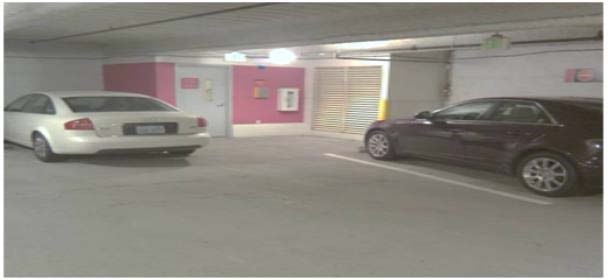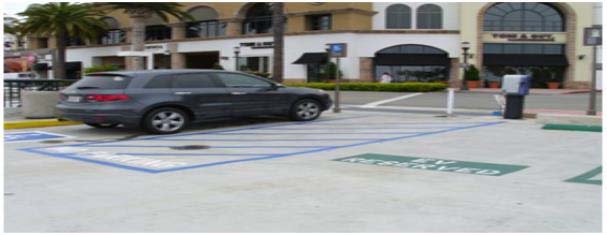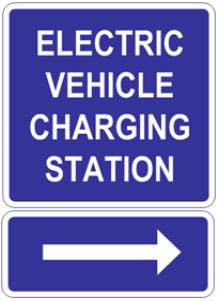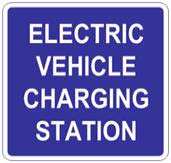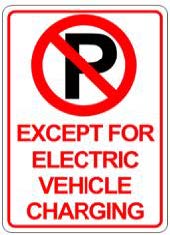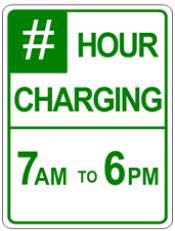Chapter 15.430
ELECTRIC VEHICLE INFRASTRUCTURE
Sections:
15.430.010 Authority and Application
15.430.100 Battery Charging Station or Rapid Charging Station – Retrofitting in Existing Development
15.430.110 Electric Vehicle Charging Station Spaces – Allowed as Required Spaces
15.430.120 Off-Street Electric Vehicle Charging Station Spaces
15.430.130 Accessible Electric Vehicle Charging Stations
15.430.140 Electric Vehicle Charging Station Spaces – Signage
15.430.150 Stacking Spaces for Electric Vehicle Battery Exchange Stations
15.430.005 Purpose
To establish “electric vehicle infrastructure” (EVI) regulations for the City to allow EVI and to meet the intent of RCW 35.63.126 requiring the City to allow EVI in all zones except for residential zones. (Ord. 16-1007 § 2; Ord. 15-1018 § 1)
15.430.010 Authority and Application
Electric vehicle infrastructure is allowed as specified in the citywide use charts under Chapter 15.205 SMC, Land Use Chart, and within the use charts for the designated overlay districts. (Ord. 16-1007 § 2; Ord. 15-1018 § 1)
15.430.015 Definitions
Battery Charging Station
An electrical component assembly or cluster of component assemblies designed specifically to charge batteries within electric vehicles, which meets or exceeds any standards, codes, and regulations set forth in Chapter 19.28 RCW and consistent with rules adopted under RCW 19.27.540.
Battery Electric Vehicle (BEV)
Any vehicle that operates exclusively on electrical energy from an off-board source that is stored in the vehicle’s batteries, and produces zero (0) emissions or pollution when stationary or operating.
Battery Exchange Stations
A fully automated facility that will enable an electric vehicle with a swappable battery to enter a drive lane and exchange the depleted battery with a fully charged battery through a fully automated process, which meets or exceeds any standards, codes, and regulations set forth by Chapter 19.27 RCW and consistent with rules adopted under RCW 19.27.540.
Charging Levels
Means the standardized indicators of electrical force, or voltage, at which an electric vehicle’s battery is recharged. The terms 1, 2, and 3 are the most common EV charging levels, and include the following specifications:
• Level 1 is considered slow charging.
• Level 2 is considered medium charging.
• Level 3 is considered fast or rapid charging or DC fast charge.
Level 1 is present in homes and businesses and typically operates on a fifteen (15) or twenty (20) amp breaker on a one hundred (120) volt alternating current (AC) circuit and standard outlet.
Level 2 is expected to become the standard for home and public charging and typically operates on a forty (40) amp to one hundred (100) amp breaker on a two hundred eight (208) or two hundred forty (240) volt AC circuit.
Level 3 is primarily for commercial and public applications (e.g., taxi fleets and charging along freeways) and typically operates on a sixty (60) amp or higher dedicated breaker on a four hundred eighty (480) volt or higher three (3) phase circuit with special grounding equipment. Note that the term “Level 3” is recommended to identify the increased power need in a numerical fashion (i.e., “3”), but the Level 3 charging level is also sometimes referred to as “DC fast” charging and “rapid” charging (see definition of “Rapid or DC Fast Charging Station”).
Electric Scooters and Motorcycles
Any two (2) wheel vehicle that operates exclusively on electrical energy from an off-board source that is stored in the vehicle’s batteries and produces zero (0) emissions or pollution when stationary or operating.
Electric Vehicle
Any vehicle that operates, either partially or exclusively, on electrical energy from the grid, or an off-board source, that is stored on-board for motive purpose. “Electric vehicle” includes: (A) a battery electric vehicle (BEV); (B) a plug-in hybrid electric vehicle (PHEV); (C) a neighborhood electric vehicle; and (D) medium-speed electric vehicle.
Electric Vehicle Charging Station
A public or private parking space that is served by battery charging station equipment that has as its primary purpose the transfer of electric energy (by conductive or inductive means) to a battery or other energy storage device in an electric vehicle. An electric vehicle charging station equipped with Level 1 or Level 2 charging equipment is permitted outright as an accessory use to any principal use.
Electric Vehicle Charging Station – Private
An electric vehicle charging station that is (A) privately owned and has restricted access (e.g., single-family home, multi-family parking, executive parking, designated employee parking) or (B) publicly owned and restricted (e.g., fleet parking with no access to the general public).
Electric Vehicle Charging Station – Public
An electric vehicle charging station that is (A) publicly owned and publicly available (e.g., park and ride parking, public library parking lot) or (B) privately owned and publicly available (e.g., shopping center parking, nonreserved parking in multi-family parking lots).
Electric Vehicle Infrastructure
Structures, machinery, and equipment necessary and integral to support an electric vehicle, including battery charging stations, rapid charging stations, and battery exchange stations.
Electric Vehicle Parking Space
Any marked parking space that identifies the use to be exclusively for the parking of an electric vehicle.
Electric Vehicle Waiting Space
An off-street parking space where an electric vehicle, plug-in hybrid electric vehicle, electric scooters, and motorcycles wait to use a public electric vehicle charging station.
Medium-Speed Electric Vehicle
A self-propelled, electrically powered four (4) wheeled motor vehicle, equipped with a roll cage or crush-proof body design, whose speed attainable in one (1) mile is more than twenty-five (25) miles per hour but not more than thirty-five (35) miles per hour and otherwise meets or exceeds the Federal regulations set forth in 49 CFR 571.500.
Neighborhood Electric Vehicle
A self-propelled, electrically powered four (4) wheeled motor vehicle whose speed attainable in one (1) mile is more than twenty (20) miles per hour and not more than twenty-five (25) miles per hour and conforms to Federal regulations under 49 CFR 571.500.
Nonelectric Vehicle
Any vehicle not defined as an electric vehicle under this section.
Plug-In Hybrid Electric Vehicle (PHEV)
An electric vehicle that (A) contains an internal combustion engine, and also allows power to be delivered to the drive wheels by an electric motor; (B) is able to recharge its battery by connecting to the grid or other off-board electrical source; and (C) has the ability to travel short distances (typically ten (10) miles or more) powered all, or substantially all, by electricity.
Rapid or DC Fast Charging Station
An industrial grade electrical outlet that allows for faster recharging of electric vehicle batteries through higher power levels, which meets or exceeds any standards, codes, and regulations set forth by Chapter 19.28 RCW and consistent with rules adopted under RCW 19.27.540. (Ord. 16-1007 § 2)
15.430.100 Battery Charging Station or Rapid Charging Station – Retrofitting in Existing Development
A. Required off-street parking spaces within any existing development listed within the land use charts listed below may be converted to battery charging station spaces or rapid charging station spaces for battery electric vehicles (BEVs) and plug-in hybrid electric vehicles (PHEVs); provided, that the battery charging and/or rapid charging stations are accessory to the permitted uses on the property.
1. SMC 15.205.040, Use Chart, all nonresidential uses.
2. SMC 15.300.055, City Center Overlay District Use Chart, retail/commercial uses only.
3. SMC 15.305.055, S. 154th Street Station Area Overlay District Use Chart, retail/commercial uses only.
4. SMC 15.310.055, Angle Lake Station Area Overlay District Use Chart.
B. At least 0.65 spaces shall be set aside as “electric vehicle waiting spaces” for each Level 3 publicly owned public electric vehicle charging station provided on site. Waiting spaces for Level 1 and 2 publicly owned public electric vehicle charging stations shall not be required.
C. The use of any charging station on site shall not obstruct any vehicular or pedestrian traffic on site (such as waiting for a charging station space within a drive aisle or a designated pedestrian crossing) or within a public right-of-way (ROW).
D. Battery or rapid charging station spaces shall be designated for charging electric vehicles only as provided under SMC 15.430.140. Nonelectric vehicles or noncharging BEVs or PHEVs shall not be allowed. The type of signage designating these spaces shall be approved by the Director. (Ord. 16-1009 § 12; Ord. 15-1018 § 1)
15.430.110 Electric Vehicle Charging Station Spaces – Allowed as Required Spaces
A. Electric vehicle charging station spaces shall be allowed to be used in the computation of required off-street parking spaces as provided under SMC 15.455.110; provided, that the electric vehicle charging station(s) is accessory to the primary use of the property.
B. If a publicly owned and publicly available Level 3 electric vehicle charging station(s) is provided on site, 0.65 electric vehicle waiting spaces shall also be provided for each electric vehicle charging station. These spaces shall be in addition to the off-street parking spaces required under SMC 15.455.110. (Ord. 15-1018 § 1)
15.430.120 Off-Street Electric Vehicle Charging Station Spaces
A. Number. No minimum number of charging station spaces is required.
B. Location and Design Criteria. The provision of electric vehicle parking will vary based on the design and use of the primary parking lot. The following required and additional locational and design criteria are provided in recognition of the various parking lot layout options:
1. Where provided, parking for electric vehicle charging purposes is required to include the following:
a. Signage. Signage, as required under SMC 15.430.140 for each charging station space, shall be posted indicating the space is only for electric vehicle charging purposes. Days and hours of operations shall be included if time limits or tow-away provisions are to be enforced.
b. Maintenance. Charging station equipment shall be maintained in all respects, including the functioning of the charging equipment. A phone number or other contact information shall be provided on the charging station equipment for reporting when the equipment is not functioning or other problems are encountered.
c. Accessibility. Where charging station equipment is provided within an adjacent pedestrian circulation area, such as a sidewalk or accessible route to the building entrance, the charging equipment shall be located so as not to interfere with accessibility requirements of WAC 51-50-005.
d. Lighting. Where charging station equipment is installed, adequate site lighting shall exist, unless charging is for daytime purposes only.
2. Parking for electric vehicles should also consider the following:
a. Notification. Information on the charging station, identifying voltage and amperage levels and any time of use, fees, or safety information.
b. Signage. Installation of directional signs at the parking lot entrance and at appropriate decision points to effectively guide motorists to the charging station space(s).
C. Data Collection. To allow for maintenance and notification, owners of any private new electric vehicle infrastructure station that will be publicly available (see definition “electric vehicle charging station – public”) shall provide information on the station’s geographic location, date of installation, equipment type and model, and owner contact information. This information shall be submitted to the Department. (Ord. 15-1018 § 1)
15.430.130 Accessible Electric Vehicle Charging Stations
Where electric vehicle charging stations are provided in parking lots or parking garages, accessible electric vehicle charging stations shall be provided as follows:
A. Accessible electric vehicle charging stations shall be provided in the ratios shown on the following table.
|
Number of EV Charging Stations |
Minimum Accessible EV Charging Stations |
|---|---|
|
1 – 50 |
1 |
|
51 – 100 |
2 |
|
101 – 150 |
3 |
|
151 – 200 |
4 |
|
201 – 250 |
5 |
|
251 – 300 |
6 |
B. Accessible electric vehicle charging stations should be located in close proximity to the building or facility entrance and shall be connected to a barrier-free accessible route of travel. It is not necessary to designate the accessible electric vehicle charging station exclusively for the use of disabled persons. Below are two (2) options for providing for accessible electric vehicle charging stations.
|
|
Figure: OFF-STREET ACCESSIBLE ELECTRIC VEHICLE CHARGING STATION – OPTION 1 Puget Sound area parking garage. (Photo by ECOtality North America.) |
|
|
Figure: OFF-STREET ACCESSIBLE ELECTRIC VEHICLE CHARGING STATION – OPTION 2 Fashion Island Shopping Mall, Newport Beach, CA. (Photo by LightMoves.) |
(Ord. 15-1018 § 1)
15.430.140 Electric Vehicle Charging Station Spaces – Signage
A. Off-street public electric vehicle charging station spaces shall provide the following signage:
|
|
Figure: DIRECTIONAL – OFF-STREET PARKING LOT OR PARKING GARAGE |
|
|
|
|
|
|
|
12" x 12" |
|
|
|
|
|
|
|
|
|
|
|
|
|
|
|
|
|
|
|
|
12" x 6" |
|
|
|
|
Comment: The directional sign for an on-site parking lot or parking garage should be used in the parking facility with a directional arrow at all decision points.
|
|
Figure: OFF-STREET EV PARKING – PARKING SPACE WITH CHARGING STATION EQUIPMENT |
||
|
12" x 12" |
|||
|
|
|
|
|
|
|
|
||
|
|
|
||
|
|
|
||
|
12" x 18" |
12" x 18" |
||
|
|
|
||
Comment: Combination sign identifying space as an electric vehicle charging station, prohibiting nonelectric vehicles, with charging time limits. The use of time limits is optional. The blue/white and red/black signs define that only an electric vehicle that is charging can use the spaces. The green sign defines time limits for how long an electric vehicle can be in the space during the specified hours. Outside of the specified hours, electric vehicles can charge for an indefinite period of time. (Ord. 15-1018 § 1)
15.430.150 Stacking Spaces for Electric Vehicle Battery Exchange Stations
Electric vehicle battery exchange stations shall provide three (3) stacking spaces. A stacking space shall be an area measuring eight (8) feet by twenty (20) feet with direct forward access to the battery exchange bay. A stacking space shall be located to prevent any vehicles from extending onto the public right-of-way, or interfering with any pedestrian circulation, traffic maneuvering, or other required parking areas. Stacking spaces may not be counted as required off-street parking spaces. (Ord. 15-1018 § 1)



